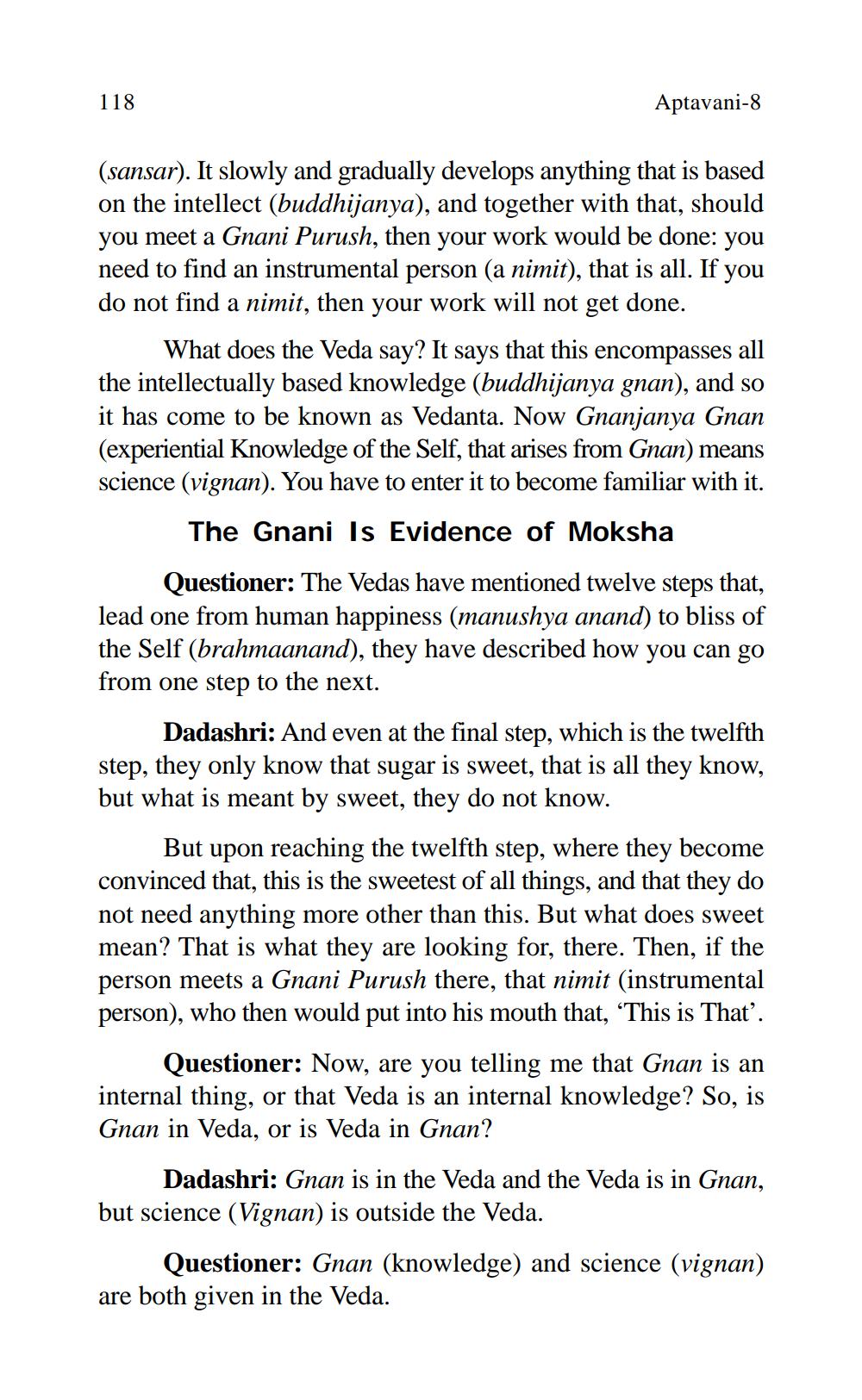________________
118
Aptavani-8
(sansar). It slowly and gradually develops anything that is based on the intellect (buddhijanya), and together with that, should you meet a Gnani Purush, then your work would be done: you need to find an instrumental person (a nimit), that is all. If you do not find a nimit, then your work will not get done.
What does the Veda say? It says that this encompasses all the intellectually based knowledge (buddhijanya gnan), and so it has come to be known as Vedanta. Now Gnanjanya Gnan (experiential Knowledge of the Self, that arises from Gnan) means science (vignan). You have to enter it to become familiar with it.
The Gnani Is Evidence of Moksha
Questioner: The Vedas have mentioned twelve steps that, lead one from human happiness (manushya anand) to bliss of the Self (brahmaanand), they have described how you can go from one step to the next.
Dadashri: And even at the final step, which is the twelfth step, they only know that sugar is sweet, that is all they know, but what is meant by sweet, they do not know.
But upon reaching the twelfth step, where they become convinced that, this is the sweetest of all things, and that they do not need anything more other than this. But what does sweet mean? That is what they are looking for, there. Then, if the person meets a Gnani Purush there, that nimit (instrumental person), who then would put into his mouth that, “This is That’.
Questioner: Now, are you telling me that Gnan is an internal thing, or that Veda is an internal knowledge? So, is Gnan in Veda, or is Veda in Gnan?
Dadashri: Gnan is in the Veda and the Veda is in Gnan, but science (Vignan) is outside the Veda.
Questioner: Gnan (knowledge) and science (vignan) are both given in the Veda.




